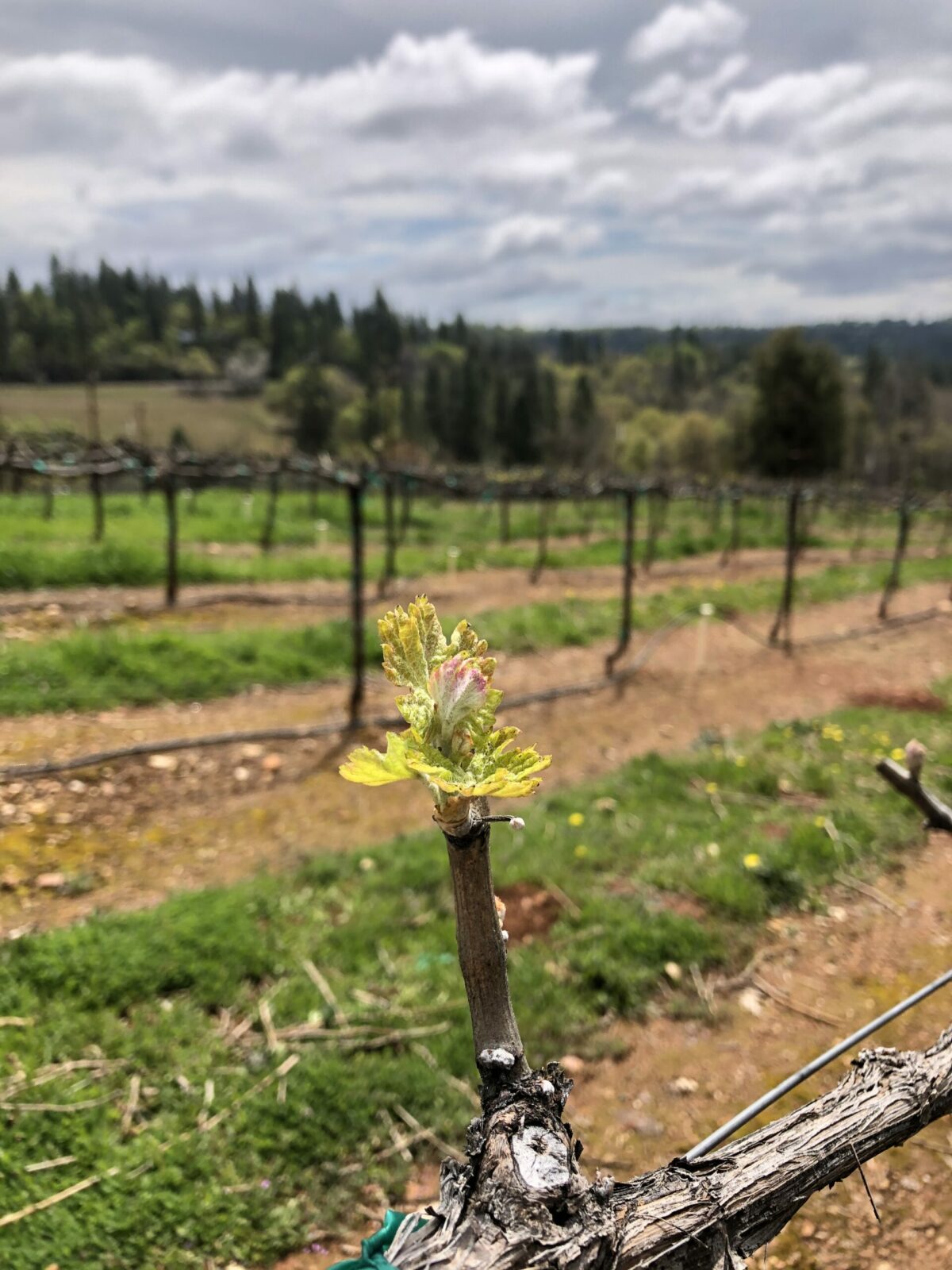Frost Season in the Vineyards
Contributed by Eileen Javora Boeger
Spring in El Dorado wine country of the Sierra Nevada foothills is one filled with anxious anticipation. After a relatively warm and rain-sparse January and February, the vines are springing to life. Individual buds on the vines are swelling with stored nutrients and are starting to burst forth new, green-leafed growth. We are full of anticipation because the timing of bud break gives an early indication as to when harvest could begin later in the year. It is also a source of anxiety because this year the process began around the first week of March, still far from the end of frost season.

Frost is perhaps the single most concerning element of risk we face during this time of the growing season. A single, hard night of cold temperatures can potentially reduce yields in the vineyard by as much 80% in certain varieties, and in extreme cases an entire year’s worth of crop could be lost.
This is, however, not to say that we are helpless, utterly at the mercy of mother nature. In fact, we have a few tools at our disposal to mitigate the risk of frost damage and protect our investment. Many frost protection strategies involve manipulating the air-temperature around the crop; either by the use of fans to mix the air, ground-cover manipulation that allows for areas of bare earth under the vines which radiates heat through the night, or some combination of both.

Another method, that we use here, is the application of water to the vines by way of overhead sprinklers. As the temperature drops in the vineyard, the sprinklers are turned on at some point above freezing. As the temperature in the vineyard drops to the freezing point and below, the liquid water freezes around the new growth, encapsulating it in a protective case of ice. As long as we can continue to apply liquid water, the process of freezing actually releases heat and keeps the sensitive buds safely at 32! It’s quite a sight!
Although not completely out of the woods from frost threat, come May, we usually begin to relax. It’s then that we look to the warm months ahead for the flowers to set the fruit for this year’s vintage.
